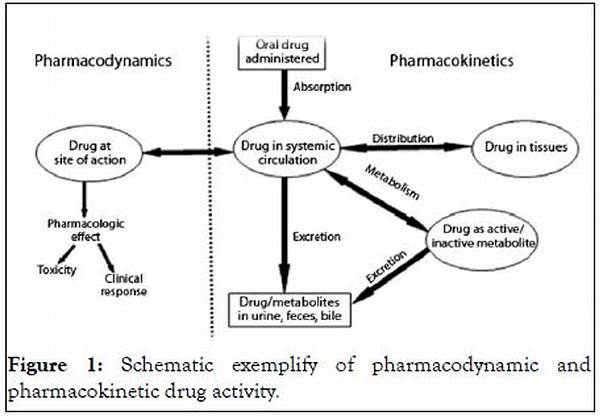In the realm of pharmacology, an essential aspect that warrants considerable attention is the evaluation of drug interaction effects. This process is critical, particularly in ensuring patient safety and optimal therapeutic outcomes. Drug interactions can result in modifications of the action of one drug by another and can potentially lead to adverse effects. As patients often consume multiple medications, understanding how these drugs interact within the body becomes vital. Evaluating drug interaction effects requires a deep comprehension of pharmacokinetics and pharmacodynamics. This evaluation involves identifying, quantifying, and interpreting the significance of interactions in clinical settings. Healthcare professionals, therefore, must possess comprehensive knowledge and analytical skills to manage and mitigate potential interaction risks, ensuring efficacy and safety while minimizing harm to patients.
Read Now : Insomnia Management Using Herbal Products
The Importance of Understanding Drug Interactions
In understanding drug interactions, the focus lies on examining how simultaneous drug usage affects the body. Evaluating drug interaction effects is a dynamic and ongoing process, as drugs continuously interact with new medications entering the market. Such evaluations consider variables such as dosage, administration routes, and patient-specific factors like age, sex, and genetic predispositions. Integrating modern technology and sophisticated analytical methods enhances the precision and reliability of these evaluations. Moreover, continuous research and updated clinical guidelines are pivotal in identifying and assessing potential interactions. The ultimate objective is to develop strategies to avoid adverse drug interactions, thereby improving patient outcomes and contributing to the advancement of personalized medicine.
Mechanisms and Types of Drug Interactions
Evaluating drug interaction effects involves recognizing various mechanisms such as pharmacokinetic interactions and pharmacodynamic interactions. Pharmacokinetic interactions affect absorption, distribution, metabolism, and excretion of drugs, potentially altering their concentrations and effects. In contrast, pharmacodynamic interactions influence the drug’s effect, intensifying or undermining its efficacy. Drug interactions can be classified into several types, including synergistic, antagonistic, and additive effects. Identifying these interactions aids healthcare practitioners in making informed decisions regarding drug prescriptions and tailored therapy regimens. Evaluating drug interaction effects ensures that patient treatment plans remain safe, efficient, and free from unnecessary complications. This systematic approach is indispensable in clinical practice for maintaining patient health and welfare.
Significance of Clinical Monitoring and Assessment
Clinical monitoring is a cornerstone in evaluating drug interaction effects, serving as a proactive measure to detect and address potential interaction risks. Systematic assessments during clinical trials and post-marketing surveillance help ascertain the safety profiles of drug combinations. These evaluations must integrate patient-specific parameters and genetic information, offering a more individual-focused approach to therapy. Regular re-assessment of drug interactions is essential in adapting to new findings and emerging evidence. Through constant vigilance and application of evidence-based guidelines, healthcare professionals can significantly minimize the risk of adverse drug interactions, thus promoting safer pharmacotherapy and enhancing the overall quality of patient care.
Evaluating Drug Interaction Effects in Informal Contexts
1. Evaluating drug interaction effects is all about figuring out how different meds might mess with each other. It’s crucial because people take more than one pill, and the wrong combo can be bad news.
2. When evaluating drug interaction effects, consider if one med can make another work too well or not at all. It’s like tweaking the volume on a stereo – you want just the right balance.
3. Drug interaction evaluation helps to prevent unpleasant side effects from mixing medications. It’s like knowing which friends you can safely invite to a party without causing drama.
4. Evaluating drug interaction effects means looking at how drugs interact at different times. Some can clash instantly, while others take a while to show their true colors.
Read Now : Telemedicine For Rural Areas
5. Understanding and evaluating drug interaction effects is key for pharmacists and doctors. They need to ensure any mix of medications taken is safe and doesn’t cause unexpected issues for patients.
Technological Advances in Drug Interaction Evaluations
In recent years, technological advancements have profoundly transformed the methodology of evaluating drug interaction effects. Sophisticated software and databases have been developed to predict potential interactions before they occur. These technologies aid clinicians by providing comprehensive interaction analyses and personalized alerts based on patient histories, facilitating informed decision-making. Moreover, computerized models simulate drug interactions, enhancing prediction accuracy and supporting proactive healthcare management. The integration of electronic health records (EHRs) with real-time drug interaction checking systems empowers healthcare providers to promptly identify potential risks, thereby safeguarding patient health. As technology continues to advance, the capacity to evaluate drug interaction effects evolves, leading to more precise and safer prescription practices.
Challenges in Drug Interaction Evaluations
Evaluating drug interaction effects presents several challenges, including the complexity of interactions and the vast array of available medications. The need for comprehension of detailed pharmacological science makes interaction evaluations inherently intricate. Additionally, variability in patient genetics and metabolic responses necessitates highly individualized assessment techniques. Healthcare providers often encounter difficulties in balancing benefits and potential risks, requiring continuous updates and education in pharmacology. Moreover, accurately evaluating drug interaction effects in polypharmacy scenarios becomes arduous due to multiple possible combinations, requiring rigorous research and extensive clinical data analysis. Despite these challenges, constant advancements in pharmacogenomics and clinical research strive to overcome the hurdles in evaluating drug interaction effects.
Conclusion
In summary, evaluating drug interaction effects is an essential component of modern pharmacotherapy. By understanding and assessing how various drugs influence each other, healthcare professionals can anticipate and mitigate adverse reactions, ultimately ensuring patient safety and therapeutic efficacy. The dynamic nature of drug interactions necessitates ongoing research, technological integration, and education to stay informed about new discoveries and changing guidelines. As medicine progresses towards a more personalized approach, the meticulous evaluation of drug interaction effects will undoubtedly play a pivotal role in optimizing treatment regimens, enhancing patient outcomes, and advancing healthcare practices globally. Collaboration among healthcare teams and leveraging technological innovations are instrumental strategies in addressing the complexities of drug interactions and transforming this critical aspect of pharmacology.
